Can I Use My RV Generator to Power My House: Learn About Watts Impact
Every time the lights go out, people worry about how long it will be until they’re back on. This gets you thinking that “can I use my RV generator to power my house“?
If the electricity goes out throughout the day, you can use your RV generator to keep the house’s electrical devices and heating equipment running. The capacity of your RV generator will determine how many of your home appliances you can run at once.
In this article, learn what home appliances an RV generator can power, how big of it you’ll need for your home as well as safety tips to use your RV generator. So, let’s get started!
Table of Contents
Can a Portable Generator Power a Whole House?

Unlike devices in recreational vehicles, standard household appliances consume many times more electricity.
Because of this, the power an RV generator produces wouldn’t be adequate for running all of a home’s electronics. In an emergency power outage, however, it can provide enough energy to run a few essentials, such as a few lights, a fan, a refrigerator, a stereo system, a garage door opener, a laptop, and a computer.
The Differences Between Starting and Running Watts on a Generator
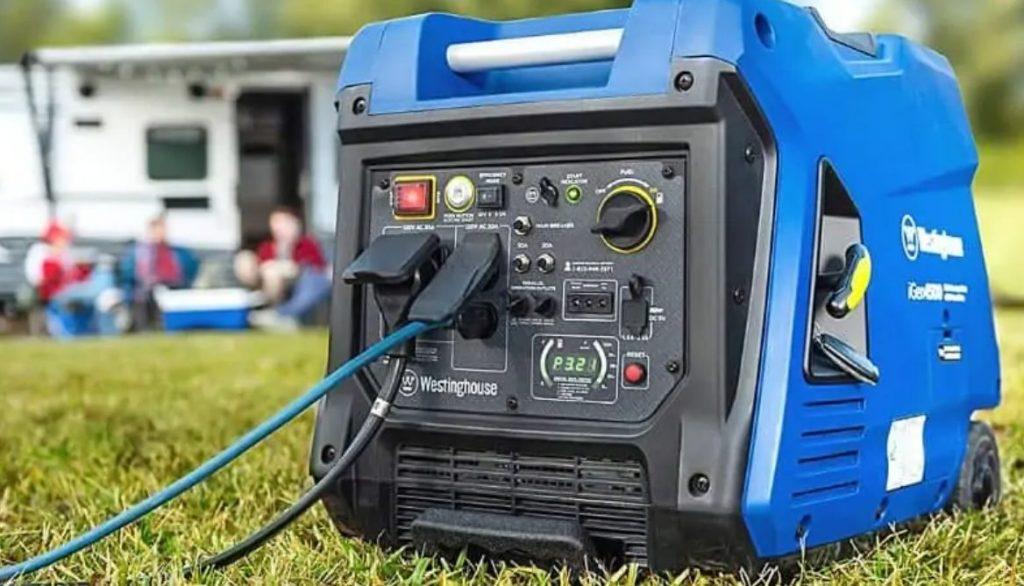
Running or rated watts are the continuous watts required to maintain the functionality of the equipment. Starting watts are the additional watts required for two to three seconds to start motor-driven appliances such as a refrigerator or washing machine. This is the peak power that the RV generator can deliver.
Starting or Peak Watts
The starting or peak watts of a generator are the maximum power output for a brief period of time. This is the extra power to get a heavy appliance, such as a refrigerator’s motor or an air conditioner compressor, up and running.
Running or Rated Watts
In contrast to starting watts, a generator’s running or rated watts refer to the amount of continuous power an RV generator is expected to provide while operational. Your home’s equipment would not function without this steady stream of electricity.
How Big of a Generator do I Need for my House?

The most essential appliances in your home can be powered by a portable generator with a wattage rating of between 1000 and 3000 watts, for example, a Craftsman 2200i generator. is an affordable option with 2200 starting and 1700 running watts. It can power your home’s electrical appliances such as a few lights, fans, air conditioners, fridge/freezer, well pump, HVAC system, etc.
The most crucial aspect in selecting how many home appliances an RV generator runs can power is its size. You’ll need to know the wattage ratings of the home appliances you want your generator to power.
You’ll find a list of popular home appliances, along with their respective wattage ratings, below.
Appliances | Starting Watt | Running Watt |
Refrigerator or Freezer | 1200 | 132-192 |
Microwave Oven (1000 watts) | 1500 | 1500 |
Fluorescent Lamps | 13-15 | 13-15 |
LED Lamps | 10 | 10 |
Furnace Fan (1/2 Horsepower) | 2350 | 875 |
Television | 190 | 190 |
Coffee Maker | 600 | 600 |
Sump Pump (1/4 Horsepower) | 1000 | 600 |
Window Air Conditioners | 2200 | 1500 |
Hot Water Heater | 4500 | 4500 |
Garage Door Opener | 1420 | 720 |
Electric Kettle | 1500 | 1200 |
Washing Machine | 400-1400 | 400-1400 |
How to Calculate What Size Generator Is Needed to Power a House
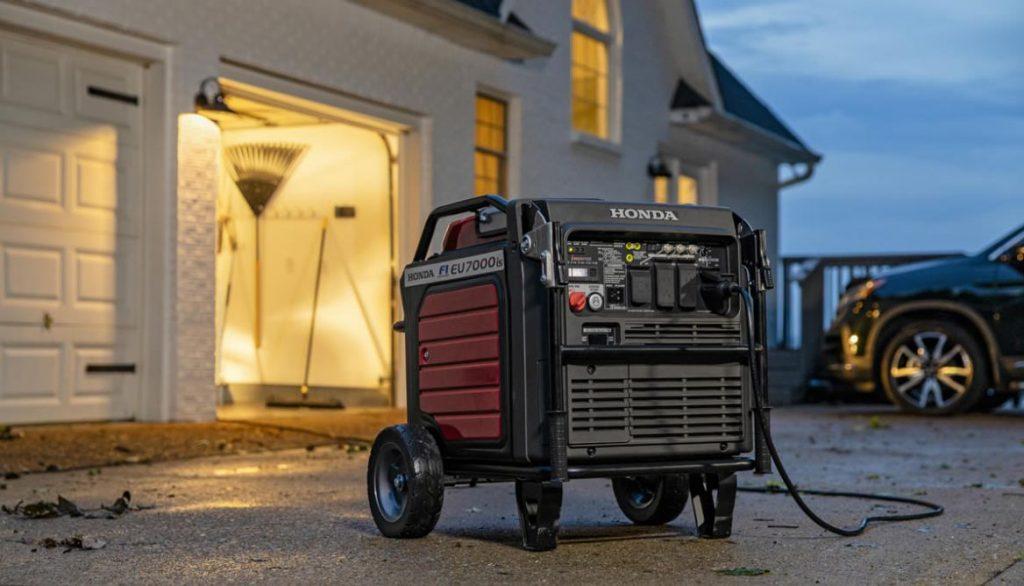
To begin, we choose watts as our unit of measurement (W). Small camping generators typically range from 1,000 to 3,000W, whereas large industrial generator produces over 10,000W.
Estimating your energy needs is the first step in determining what size generator power you’ll need to run your home comfortably.
1. Choose the Devices You Want to Run
If you need a generator to power your home during an emergency power outage, make a list of all the key appliances that need to be powered, such as your air conditioning unit, refrigerator, and lighting circuits.
2. Use a Power Requirement Calculator
Keep in mind:
- Beginning Power Input
- Power Consumption in Terms of Watts
3. Choose a Generator Slightly Bigger than Your Needs
Considerations:
- Few Hundred Watts of the Available Power Surplus
- No Significant Decrease in Lifespan (as it doesn’t run at full load)
- To Lower the Noise (running at full load makes it noisy)
Basically, if your entire running wattage needs are 1600, you should look for a generator that provides at least 1800 rated wattage; if your total running wattage needs are 6800, you should look for a generator that provides 7500 rated and 9500 starting watts.
Making Sense of Wattage Rating
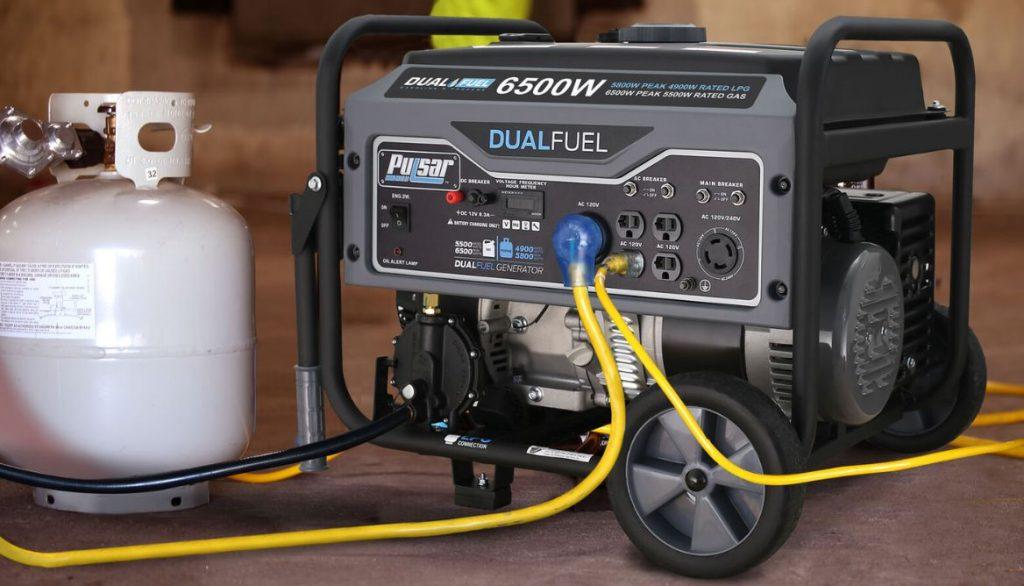
You can find the generator’s wattage rating, also known as its output rating, written anywhere on the machine. There is typically an average rating as well as an extreme rating. The former describes the maximum continuous electrical load that may be supplied by the generator.
The second value, peak, is the greatest watts that a generator can supply momentarily, such as when a refrigerator’s compressor turns on to cool the contents temporarily.
How Much Power Do You Need?
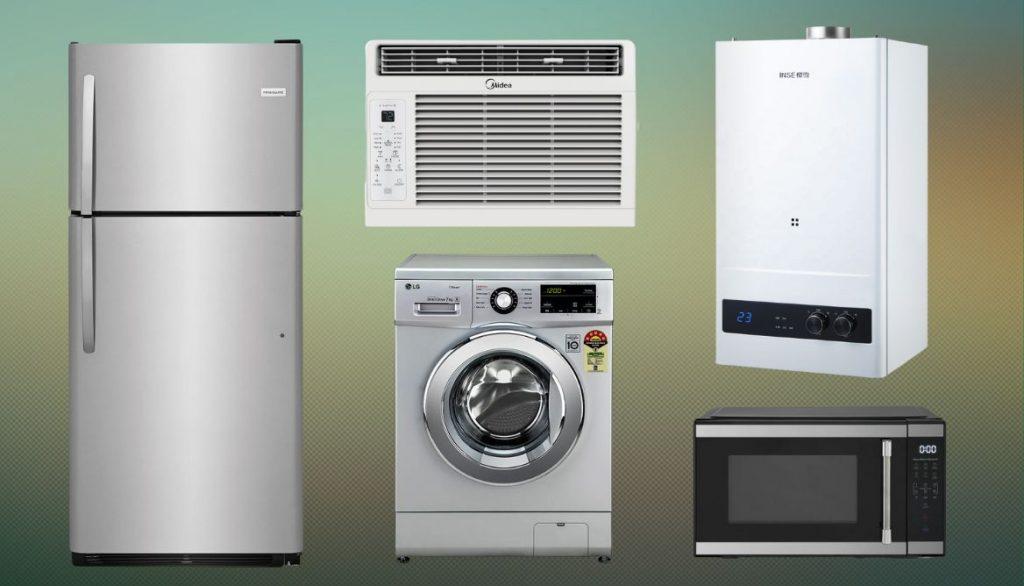
Every appliance consumes different units and the number of watts they require depends on their wattage requirements. Read below to learn where to find it and what output power is needed to run those appliances along with some other essential info.
Where to Find Wattage Requirements?
Consider which essentials you’d like to be operational following a storm, starting with the lower baseline number. The average wattage requirements of appliances like air conditioners, refrigerators, space heaters, and fans can be found in your generator purchase guide. The watts needed to operate most gadgets are typically printed on a label beside the model number.
Output Power
Usually, the power output of a recreational generator is between 1600 and 2000 watts. This is enough to power a few lamps or charge a phone, but it won’t even come close to powering a single space heater.
Affordable Option
A stackable Champion 73536i generator costs $480 and allows you to run many generators simultaneously to overcome this limitation. Two or more recreational generators can be linked via cable and set to run in parallel to power devices like an air conditioner or large heater.
Extending Electrical Reach
If you need to extend your electrical outlet’s reach, utilize an appropriately rated heavy-duty extension cord. Most power cords will include a tag near one end that specifies the maximum wattage that can be used with the cord.
Hardwired Appliances Are a No-Go with Transfer Switch
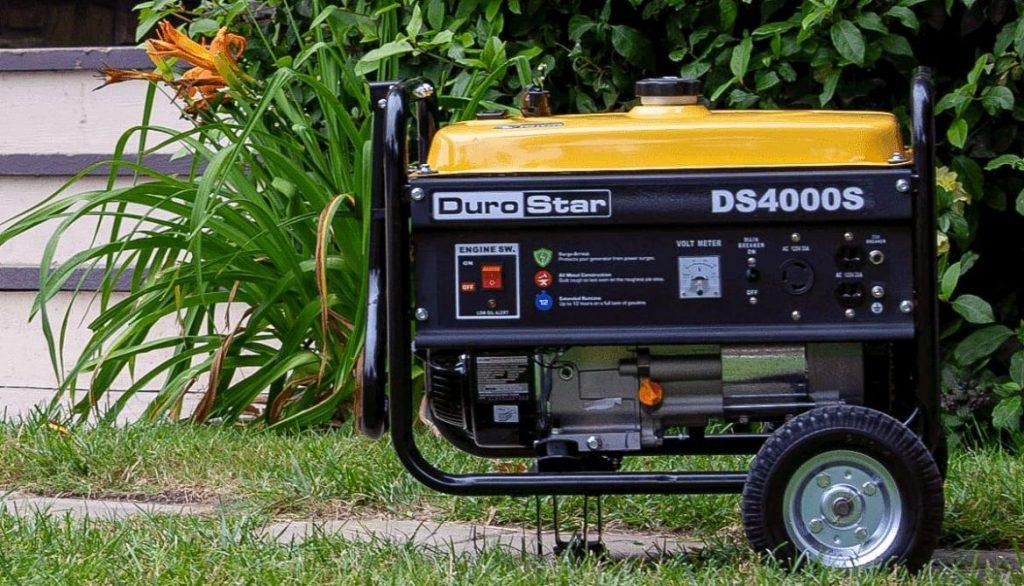
Recreational generators’ main drawback? No hardwired 220-volt appliances or those that need a 220-volt generator can be used. (such as an electric range or dryer).
There is no need to plug individual appliances into a portable generator when a transfer switch or interlock device may be installed to power a whole circuit. This rules out the possibility of using a generator to power a hardwired water heater without an outlet, even if the generator can supply more power than the heater needs.
Even worse, there is no way around this problem because 110-volt generators are not compatible with interlock devices or transfer switches. In other words, if you’re going to put in any device, you may as well acquire a generator that can power more than just the bare minimum.
What Are The Primary Types of RV Generators?
It’s possible to find a wide variety of generators on the market. Others aren’t made with RVs in mind at all. There are two main types of RV generators: portable and permanent installations.
Portable RV Generators

Campers frequently use portable generators because they are inexpensive and convenient. These portable generators are the only choice for many campers because they cannot install an onboard generator.
Portable generators include a standard outlet on one side that accepts a shore power cord, allowing them to power an RV. Camping is only one of many uses for the many varieties of portable generators available.
Contractor or Frame Generators
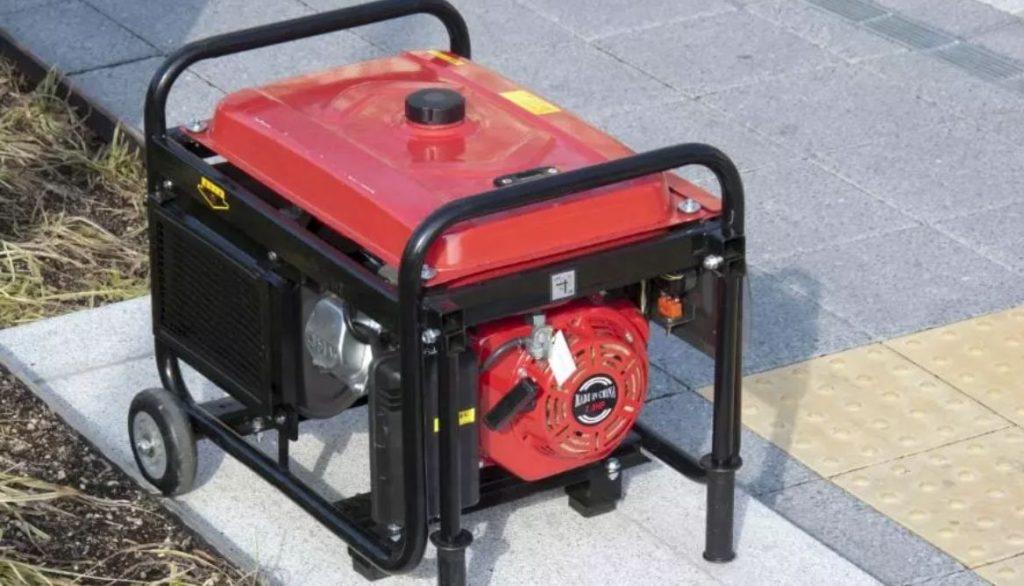
With regards to price and output, this is the most common form of a generator. Most contractor-grade generators have an output range of 3,000 to 10,000 watts.
Because of their open-frame design, the engine and generator components can be cooled by the airflow. Due to their common use by contractors in the building industry, these machines have another name: contractor generators.
While these generators can be used for camping, they tend to be significantly noisier than other options. As a result, unless you are constantly operating them at full capacity, their fuel efficiency will be poor.
You should know that many campers with recreational vehicles find the noise from this sort of generator to be annoying and avoid using it. If you must camp nearby with this type of generator, please consider running a longer wire and setting up your tent further away from the noise source.
Inverter Generators
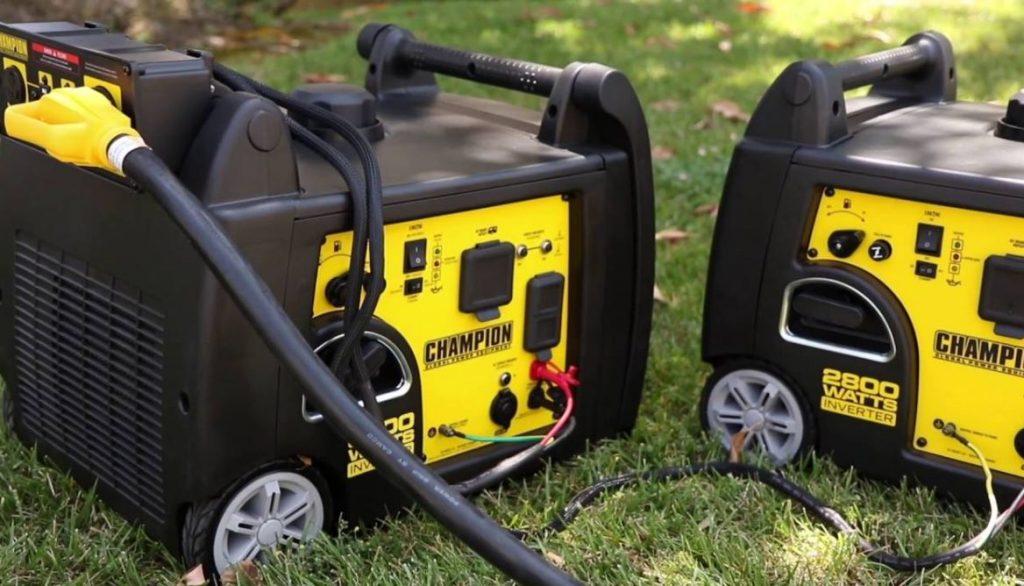
Although inverter generators are more expensive and have lower power outputs than contractor types, they have numerous advantages for campers. Typically, this kind of generator will be completely sealed off and will make use of fans to keep the internal components cool.
Sizes for inverter generators range from 1,000 to 5,000 watts, making them more portable than contractor models.
The inverter technology that generators operate on is what sets them apart. As a result, they can carry a greater load without increasing noise levels and use significantly less fuel.
Some inverter generators also have the unusual capacity to link “in parallel,” allowing you to construct a larger generator out of two smaller units. When the power is high, the parallel connection allows you to run multiple units, and when it is low, you may conserve gasoline by running just one.
For these reasons, inverter generators are the finest portable generators for most RV vacationers.
Built-In RV Generators
- Numerous modern RVs have integrated generators into the chassis during production. One of these additions may easily increase the price of a recreational vehicle by $3000 to $8,000. These generators are often positioned underneath the chassis or within the RV itself.
- Oversized fifth wheels and motorized RVs are the most prevalent types of RVs with onboard generators. Built-in generators normally have power ratings between 2,500 and 7,000 watts, although they can reach 12,000 watts.
- Built-in generators, as the name implies, are permanently placed within a recreational vehicle and don’t need any extra wiring or outlets. The hardwiring ensures that electricity is always available to the rig when the generator is switched on.
- These generators may be started by pressing a button inside the RV. They may be programmed to turn on anytime the RV need electricity. When the power goes out or the temperature becomes too high, auto-start is useful.
- For generators that are already in place, several solutions are available. Different types of fuels, such as propane, diesel, and gasoline, are often used. The majority of variants are single-speed, however portable versions with inverters are also available.
- Most RVs include built-in generators that can handle powering the vehicle’s vital systems, depending on their size. The majority of RVs with built-in generators only feature one functional power outlet.
RV Generator Subtypes
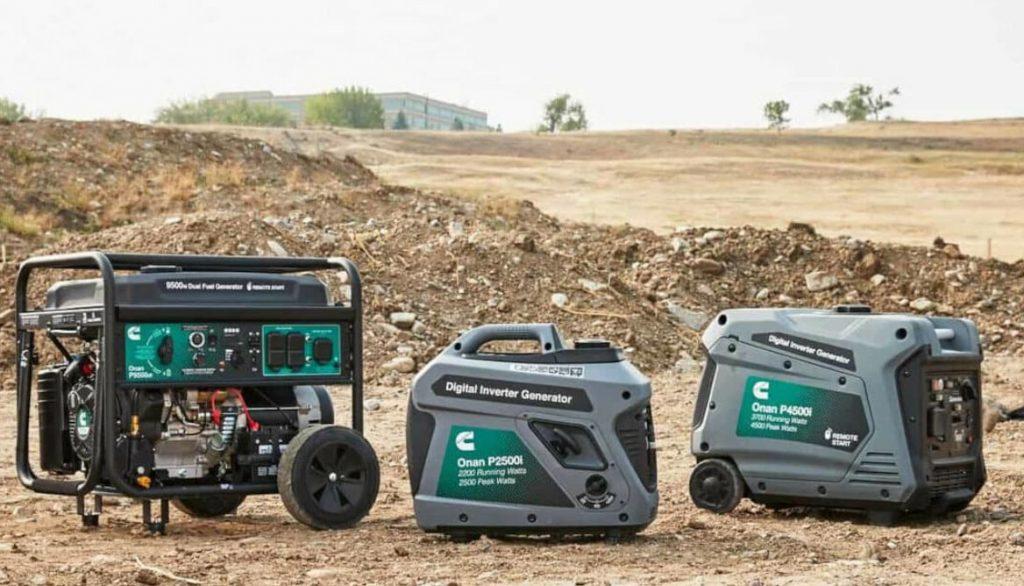
There are various subtypes to pick from when it comes to portable and stationary generators. Alternative fuels, Inverter versus fixed-speed operation, and phase/voltage configurations are also possibilities to consider.
1. Generator Fuel Type
Most RV generators are powered by one of three fuels: gasoline, diesel, or propane. If your RV has a generator, it probably uses the same fuel as the rest of your vehicle. It will be a gas RV generator installed in a gas coach and a diesel RV generator if it is installed in a diesel coach.
Most trailers with built-in generators run on either gasoline or propane. While many trailers do not come equipped with gas tanks, most carry propane, making it a viable fuel source for the generator.
Portable generators typically run on gasoline, though some can also be powered by propane. Those powered by diesel are available but much less popular.
Generators that run on propane often have minimal fuel concerns and can sit idle for extended periods without deteriorating fuel quality. Diesel generators have the longest lifespan of any generator type and are the second least problematic fuel.
However, gasoline generators are notorious for their fuel problems, as gasoline can get stale within a few months. It is strongly advised that gasoline generators always have fuel stabilizer chemicals.
2. Inverter RV Generators
Rather than relying on mechanical means, the AC power output of an inverter generator is produced by electronics. In most cases, an inverter is used to change the output from a DC-producing unit into an AC one for usage in these types. This is functionally analogous to how an inverter transforms DC from a battery into conventional AC electricity.
Regardless of the load, non-inverter or mechanical generators must maintain a constant RPM to produce the desired amount of electricity. However, an inverter generator just needs to spin at a fraction of that speed while producing the same amount of electricity thanks to some clever circuitry.
The generator will pick up speed as the load grows. As a result, inverter generators are far less noisy and consume less fuel, particularly when powering relatively light loads.
3. Single or Split Phase Generators
It all boils down to whether or not the generator can produce 240Volts, as opposed to the more common 120Volts. Because the generator produces 240 volts and splits it into 120 volts twice, a 240-volt generator is known as a split-phase generator. It is possible to use this type of generator for recreational vehicles, however, you may need a different kind of socket for it.
Unfortunately, most RV generators only provide single-phase electricity, while a 50-amp RV requires split-phase power. Even though it’s not common, a 240-volt RV generator with split phases is essential. With an adapter that links the two legs of the RV’s input, you can plug in most single-phase generators and run the entire RV off of a single power source.
The same power division is accomplished by most onboard generators, which are also typically single-phase. This is normally accomplished by circuit breakers located at the generator. Each RV main circuit breaker supplies power to a single outlet.
Unless you have very specific, high-power requirements, a split or single-phase generator is probably not something you need to worry about.
4. Solar Generators
Due to their fundamentally different operation, solar generators cannot be properly classified as the subject of this article. A solar generator incorporates all the components of a solar power system into a single device. Having one is fantastic, but it usually doesn’t replace the need for a fuel generator when camping in an RV.
When it Comes to Powering Fragile Electronics, How Big of a Generator do I Need?
That’s not the case at all. Total harmonic distortion (THD) is a problem with traditional heavy-duty generators, and 3% THD is the highest level considered safe for powering modern devices.
The noise level of standby and state grid power generators is far lower than that of standard heavy-duty portable generators. Continuous use over extended periods would cause damage to modern gadgets like flatscreen TVs or laptops.
Fortunately, portable inverter generators don’t suffer from this issue, so they can be utilized to power these devices without worry. Most inverters aren’t powerful enough to power an entire home, but they have a parallel capability that allows you to connect two of them together to double your power.
How to Use my RV Generator to Power my House Safely?
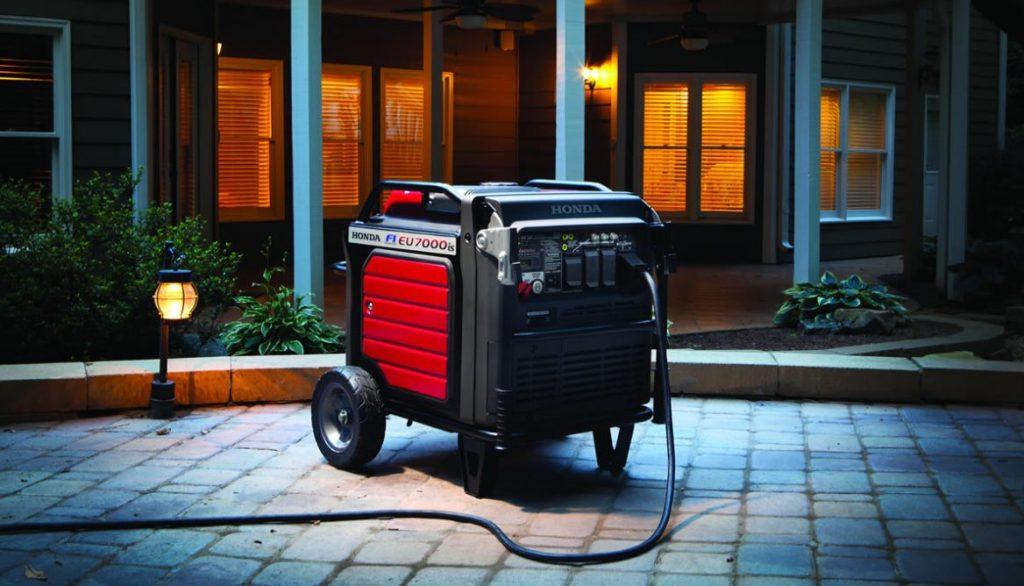
Always refer to the generator’s owner’s manual for specific operating instructions and safety precautions. Backfeeding, which happens when a portable generator is plugged into an electrical outlet, is absolutely forbidden. If you decide to use a transfer switch, have a qualified technician set it up for you.
Below are a few steps to help you power your house with an RV generator without any safety concerns:
Extension Cord and Gen-Cords:
- Abide by the pre-start portable generator checklist.
- Place your generator outdoors for safety (min. 10ft away from the transfer switch).
- Follow any one of the methods mentioned below to connect the generator to indoor appliances:
- To connect multiple appliances run a one-gen cord
- Bring in many extension cords from the outside to the generator plug in order to run all the appliances.
- Power the generator
Transfer Switches
- Use a gen cord to connect the generator with a transfer switch.
- Start the generator in the open air.
- Toggle the main breakers in the automatic transfer switch from “Line” to “Generator” power.
- Step by step turns the circuits you want to power.
FAQ
Can you just hook up a generator to your house?
Yes, surely you can. Just simply connect your generator’s 20- or 30-amp outlet to the gen wire. The opposite end is divided into multiple wall outlets, so you can bring your extension cords inside and begin safely connecting them.
Can you use a portable generator as a whole house generator?
Affirmative! It is safe to use. When connected with a transfer switch and wired into your home’s electrical system, they provide nearly the same amount of power as a standby generator. If you haven’t set up a transfer switch, you can use the built-in outlets to attach compatible extension cords.
How do I back-feed my generator to my house?
Backfeeders utilize an improvised connection with two male connectors to link their generator to a wall outlet. A Generator Backfeed Cord (also known as a suicide cord) is used to connect an external generator to an electrical panel.
How big of a portable generator do you need to run a house?
A generator with a power output of between 5,000 and 7,500 watts is sufficient to power the essential appliances in a typical home. Electrical appliances and lighting systems are examples of this.
How many hours a day can you run a portable generator?
Portable generators, in contrast to permanent installations, are intended for shorter periods of time (6-18 hours). During short-term blackouts, these generators will come in handy for recreational vehicles taken on camping vacations or for powering specific home appliances.
Can you run an RV generator while sleeping?
It is perfectly safe to run your generator while sleeping, but only if you take a few measures. Before turning on the backup generator, make sure every opening is sealed.
What happens to a generator when the power comes back on?
If electricity is restored while the generator is back feeding, it might be severely damaged and you’ll need to get in contact with an electrical engineer.
Conclusion
You may use an RV generator to power household appliances, but how many at once will depend on the generator power capacity. Powering a few necessities is within the capabilities of most RV portable generators, but not the entire home.
As now you have learned about all the basic requirements and wattage ratings required to run some specific appliances or an entire home, we hope that you might have gotten your answer to the “can I use my RV generator to power my house” query.
So, what size RV generator have you been using till now? And is it enough to run your home’s main appliances? Share your answer with us in the comment section below, as we would love to hear from you!

Asen is the owner and main contributor of Camper Life. He is a full-time RV traveler since 2018. He loves camping in nature, fishing, and spending time with his family.
Striving to provide the most valuable information about campers and RVs, he shares everything he learned over the years.
That’s why Camper Life is one of the best sources to find information about RV traveling and living.



![How to Design a Minimalist Campervan? [Photos Inside]](https://camperlife.co/wp-content/uploads/2022/01/office-window-seat-768x576.jpg)


